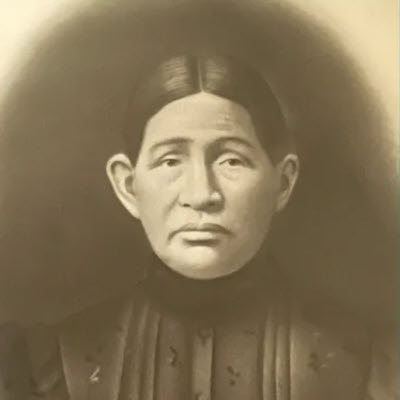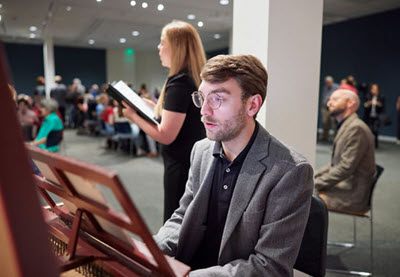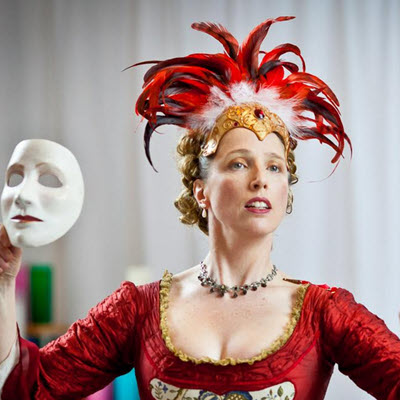by Anne E. Johnson
Published June 2, 2024
‘Gorgeous melodies that never go where you expect.’
Three compelling Ockeghem projects. Three approaches to ‘the hardest music’ of its era. ‘Every time you’re singing it, you’re sight-singing it again.’
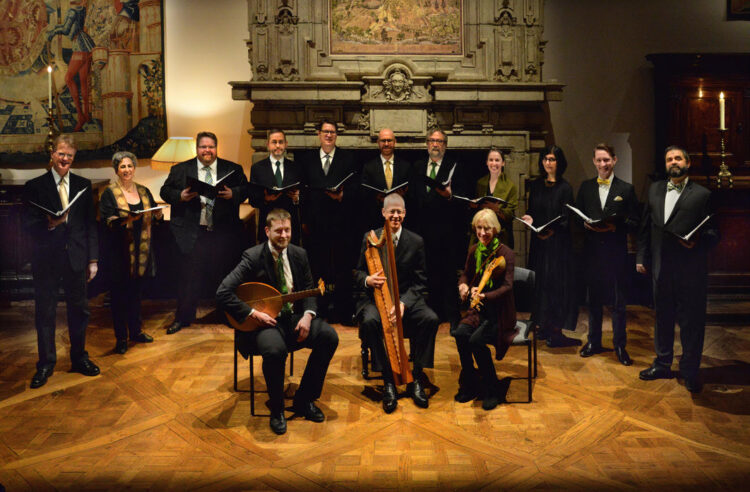
Next week, on June 12, visitors wandering from gallery to gallery at the Met Cloisters in Upper Manhattan will experience an exceptional treat: The Clarion Choir and Orchestra, under the direction of Steven Fox, are presenting an Ockeghem Marathon. (A shorter “Best of Ockeghem” event is the next day, June 13.)
In approximately 1420, Johannes Ockeghem was born in the Burgundian Netherlands. His (approximately) 600th birthday happened in 2020; in recent years, several long-term Ockeghem-centered projects have come to fruition. One of those is Fox’s marathon, which will touch on the composer’s every genre.
A comprehensive celebration comes from Blue Heron, directed by Scott Metcalfe, with Ockeghem@600, divided into 13 concerts between 2015 and 2023. The Boston-based ensemble performed all the composer’s surviving music — the songs, the motets, and the masses. Metcalfe describes their survey as “every single note,” where all “13 of those concert programs are available on our website, with extensive notes, descriptions of the project as a whole, repertoire lists,” and more. Blue Heron has also released two recordings of Ockeghem’s songs. “It is hard to be certain about this,” Metcalfe adds, “but Blue Heron may be the only ensemble in the world to have undertaken and achieved a project to perform all of Ockeghem’s music.”
Like Blue Heron, the Bay Area’s Cut Circle has also recorded Ockeghem songs, in a 2020 release from the Belgian label Musique en Wallonie. (Since then, they have recorded Josquin des Prez’s motets and are preparing a complete CD series of that composer’s music to celebrate his 500th birthday.)
It’s a tight-knit community, this world of Ockeghem aficionados. Clarion’s Fox has turned to Cut Circle’s director, Jesse Rodin, for interpretive advice, while Rodin frequently cites his former teacher, Sean Gallagher, who is the official scholar for Blue Heron’s project.
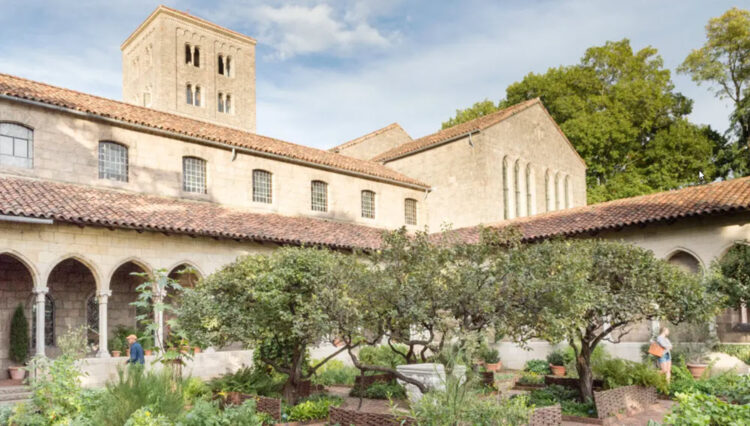
This will be the Clarion Choir and Orchestra’s seventh program produced by the Met, and the second marathon. In 2022 they offered a full day of Josquin’s music, also at the Cloisters. Limor Tomer, general manager of Met Live Arts, describes these programs as “very much aligned with the concept of how museums present visual art, an overview of an artist’s oeuvre.” The plan for the marathon makes use of “every gallery, public space, and gardens, indoor and outdoor.” Visitors will move from space to space throughout the five-hour event.
A total of 31 musicians will perform in various configurations. The day will be divided into several periods of “sets on rotation” (a group of songs, say, that will be repeated every 15 minutes). Everyone will convene for a complete Mass at the end.
The Josquin marathon was Fox’s brainchild; it’s music he’s loved since high school. He credits Tomer with suggesting they follow up with an Ockeghem day, and he welcomed “a chance to get to know a composer I knew about more from a distance than Josquin.” Overall, Fox finds Ockeghem’s work “a little darker. If Josquin and Ockeghem were two painters, I would say that Josquin was using slightly brighter colors, and Ockeghem feels dark and brooding at times.”
In general, Ockeghem is not as well-known as Josquin. Metcalfe, of Blue Heron, blames the music’s accessibility: Ockeghem’s “style is just harder to appreciate.” But because Josquin’s generation turned to simpler, more imitative counterpoint built from small melodic cells, “their melodies become less interesting,” whereas Ockeghem creates “gorgeous melodies” that “never go where you expect.”
Metcalfe finds that unpredictability daunting: “While there are underlying structures, you mostly don’t perceive that structure as you’re listening. Instead, you’re put down in the middle of something that requires you to pay attention to every moment.”
Josquin’s reputation in his own day practically obliterated that of Ockeghem, who had been considered the greatest composer of his age. “Partly that’s a function of print,” says Metcalfe. “Josquin lived long enough that his works could go and be published and printed in his lifetime, which is not true for Ockeghem.” (The lack of contemporary print sources has also led to controversy about how to spell Ockeghem’s name. Scholar David Fiala has unearthed persuasive evidence that it’s actually “Okeghem.”)
According to Jesse Rodin of Cut Circle, Ockeghem emerges from the Renaissance represented by his “three or so weirdest pieces.” Romantic-age scholars found his works “overly mathematical or too abstract. Sometimes Ockeghem was characterized as a Mystic or a Symbolist.” But thanks to mentors such as Lawrence Bernstein and Sean Gallagher, says Rodin, “I began to come to the view that it is just fabulous music. All this nonsense about mysticism or unapproachable complexity, we can just leave that behind.”
But Metcalfe thinks the issue of complexity is valid, both for listener and performer: “It’s the hardest music that I know from the 15th and 16th centuries. It feels sometimes like every time you’re singing it, you’re sight-singing it again.”
“I’m supposed to say that Ockeghem is really difficult,” counters Rodin, “but I don’t think that’s the case. There’s a limited number of rhythmic possibilities. You can get to a point and be able just to read the lines.”
But even Rodin admits to one challenge: “The thing that we moderns have the biggest trouble with is the idea of this abstracted pulse in the background that’s absolutely rigid, without which it just sounds like traffic, and with which it all coheres in this beautiful way.” Rodin tries for a “metronomic” underlying pulse with a more elastic, expressive layer of detailed notes.
Ockeghem’s 14 surviving Masses are perhaps his most-known works. Yet both Metcalfe and Rodin were inspired to record and perform his secular French songs. “The songs are so beautifully melodic,” says Metcalfe. The songs “don’t fit the narrative” of Ockeghem as a composer of long, complex works, Rodin says, describing them as “incredible little gems of pieces. It’s really a different world from what you find in the sacred music.” Fox finds that they offer a chance to use a different approach to performance: “I think in the songs maybe we do too much refining. There’s something that should be a little bit rustic about those.”
Despite his enthusiasm for the songs, Fox is excited to end Clarion’s marathon with a performance of the Missa prolationum, a canon-based work that he calls “mathematically speaking, a very impressive thing.” Beyond its technical prowess, “there’s also emotional depth and beauty,” reminding Fox of Bach and Brahms. Metcalfe also sees parallels with Bach, calling each composer “a superb contrapuntalist but also a superb melodist,” and the music both “intellectually rigorous but also incredibly sensuous and beautiful.”
Clarion opted to perform the Missa prolationum with some of Ockeghem’s motets interspersed between the Mass Ordinary movements. That’s only one of the many decisions facing performers of Ockeghem. Another is “musica ficta,” singing sharps or flats that aren’t notated. “If the original source is clear about ficta, I really try to honor that,” says Fox, but if it’s unclear, “I feel at liberty to make a choice that sounds best to me and feels most musical and is in the style of the composer.”
Metcalfe agrees that there are “tremendous questions about basics of performance practice.” Even after years of intensive Ockeghem study, “I would absolutely never claim that I have figured out what he meant.”
Another recurring question is how to fit the text to the notes, or text underlay, since Renaissance notation often does not show that relationship. Metcalfe assumed it would get easier as he worked through the music. “And now that we’ve done all of them, I don’t feel like we really have much more insight.” Sources from the Renaissance do offer minimal advice, but, for Metcalfe, “It takes a while to really internalize how the phrasing works, and that’s where you’re going to get your sense of how the words get deployed.”
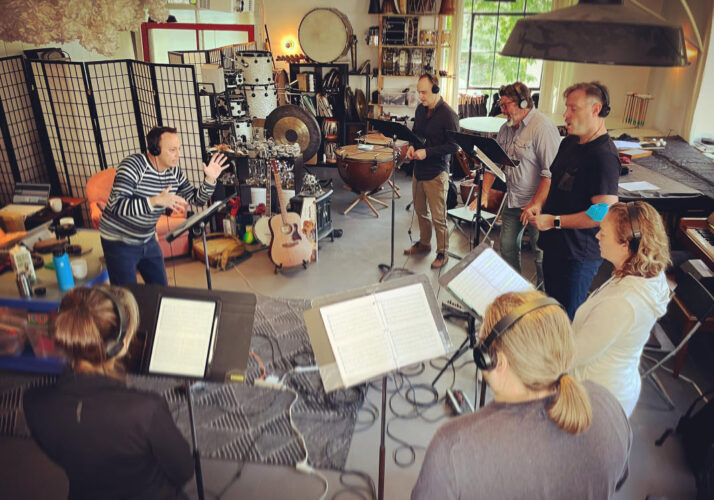
Involvement of the ensemble members is key to making good decisions. For Cut Circle, Rodin says, “Part of the process involves singers sometimes having ideas about the text underlay that are different than mine. The agency of the individual singing their own line by themselves is very powerful.” Blue Heron’s members are likewise Metcalfe’s close collaborators: “You don’t really find those things out until you’re in the lab and rehearsing. It will also depend on the specific singer to a certain extent. How much breath they need, how they’re feeling about phrasing, how their instrument functions.”
It’s essential to get a handle on the texts, “these really wonderful poems, which are often not appreciated enough,” Rodin says, who notices a tendency for musicians to discount them as repetitive and generic, “and frankly, I would say, then to perform them like you’re reading the Yellow Pages.”
“The French 15th-century poetry is not the best-loved era of French poetry,” Metcalfe admits, “but it can be beautiful as lyrics. The relationship between the songs and the poetry is very intimate.”
Rodin rejects the common belief that, because the madrigal had not yet been invented, there’s no emotional correlation between music and words in Ockeghem. “I would say the music really is responding, if not in a one-to-one way to individual words, nonetheless with all sorts of gestural, motivic, and registral devices.”
“Part of it is understanding how the French prosody works,” says Metcalfe. “The more time you spend with the sound and the rhythm of the poetry, the more you understand how the melodies might express the text.” Pronunciation matters, too, even when the text is the Latin Mass Ordinary. “It’s really important what sound you’re making, including the vowel sound and where your consonants are. Those choices make a lot of difference in the coherence of the polyphony as you perform it.”
When it comes to codifying performance practice, a good edition helps. “There really aren’t very user-friendly editions available,” Metcalfe says, so he made his own performing edition of the complete Ockeghem works — the 14 Masses, two dozen songs, and four motets. “I started with the original sources and transcribed them from that. Then it was like a big laboratory experiment.”
Rodin, for his part, says he “won’t perform anything that I haven’t been through myself. I wanted to go through all of the variant readings, all the disagreements of all the sources.”
Metcalfe is happy to share his results. “I do think that mine are easier to read and easier to use, and they have all been tested by actual singers on the field of battle. People could just e-mail me through Blue Heron, and I’ll give it to them.”
As it happens, Fox is hoping to borrow other scholar/performers’ versions — even while he prepares some of his own editions with the help of Emerson Sieverts. “Some of the new editions are written for singers, whereas players want separate parts.”
Wait. Players?
Fox believes in equal Ockeghem opportunity for voices and instruments, promising that at the marathon, “a substantial amount of the repertoire will be played rather than sung.”
For the songs, at least, Metcalfe concurs: “It is not possible to sustain the argument that they are always for all voices. Or that they must be texted in all parts.” He believes the top lines (cantus) were always sung; the tenors and contra-tenor lines, however, have “different characters” from song to song, sometimes indicating that instruments were intended. For example, “What if the first note of the contra is a long note, and there’s a rest, and the first word in the text is the article ‘Les…’? There’s no way that’s a vocal part.”
He mentions the 1980s and ʼ90s, when certain British early-music specialists insisted there were never any instruments involved in Renaissance vocal music. “Both Christopher Page and David Fallows have kind of retracted their strongest claims about that,” says Metcalfe, whose recordings of the songs include vielle, harp, vihuela, and a few wind instruments.
Yet Blue Heron also does some songs a cappella, and some using untexted voice. “There’s not a shred of evidence for it,” Metcalfe says of the latter, “but it can work beautifully.”
Rodin chose to have Cut Circle sing the Ockeghem songs entirely a cappella, “the approach that I think is the most probable.” His reward was to expose “the way the words do or do not collide, and fleeting bits of contrapuntal imitation that pass from voice to voice. All those sorts of things make for a very magical sound world.” Rodin cites Christopher Page’s Gothic Voices recordings as an inspiration.
Fox, on the other hand, even arranged some of the sacred works to include instruments. “We have the brass instruments stand together with the singers. They’re coloring the sound with the vowels that the chorus is singing.”
One thing all three directors agree on: Ockeghem deserves more attention. “There’s not a single piece I wouldn’t do again,” says Metcalfe. “As Sean Gallagher said, it’s music so great that no one performance can possibly express everything about that piece.” Rodin constantly strives to make the music come to life, “And not like a museum piece or an abstraction. I don’t care about reverence. I care about engagement and closeness.”
Now it’s Fox’s turn to seek engagement as he prepares one complete Mass, movements from two others, the motets, and 14 songs. While it’s far from the entire oeuvre, it’s as much as he can reasonably present in one day without overwhelming performers or listeners. “I would like it to feel relaxed for the audience and with less structure,” says Fox. Detailed maps will show visitors where and when each piece is being performed, encouraging them to wander.
“There’s so much richness and beauty in this music,” says Fox, “and I can’t wait to share it.”
Correction: An earlier version of this article left out details of Blue Heron’s complete Ockeghem survey, and incorrectly implied that some of Scott Metcalfe’s quotes were focused on the songs rather than on the composer’s larger output.
Anne E. Johnson is a freelance writer based in New York. Her arts journalism has appeared in the New York Times, Classical Voice North America, Chicago On the Aisle, and PS Audio’s Copper Magazine. She teaches music theory and ear training at the Irish Arts Center in Manhattan. For EMA, she recently wrote about Seven Times Salt and music for Shakespeare’s Globe.

